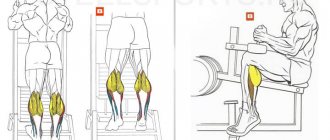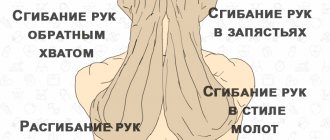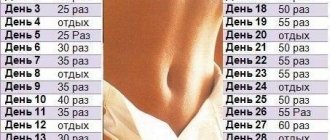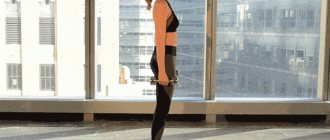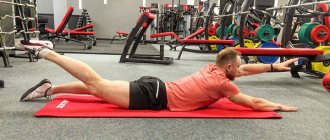Why do you need finger stretching?
Stretching is a very important skill for a guitarist. Thanks to it, he can reach previously inaccessible frets both in solo parts and in chord playing. Thus, the musician has more space for composing parts and selecting the right notes. Some chords really require stretching, especially if we're talking about jazz triads. Along with stretching, the endurance of the fingers is also trained - therefore, it becomes easier to take the barre.
Finger stretching exercises without guitar
This section presents finger stretching exercises that do not require the use of a guitar. You will only need a flat, flat surface, such as a table, or you will not need any available materials. These exercises can be used as a warm-up for the left hand on the guitar.
, before performing other exercises or simply playing music.
Using the edge of the table
Place your index or middle finger on the corner of the table and nightstand, and begin to point it down. You should feel a tingling sensation in the joint area. Take it slow. Hold it for a while and then release it.
For every knuckle
This exercise is similar to the previous one. You need to rest your finger on the wall so that only the first knuckle is on it. Hold it for a while, then repeat the same with each finger.
Second hand stretch
In this exercise, bring all your fingers together, and with the palm of your other hand, begin to bend them back. You will feel a tingling sensation in your joints. Hold this position for a while, then straighten your fingers and give them a rest. Repeat this ten times with each hand.
Using the guitar neck
Curl your fingers into a V shape, pressing them together. After this, squeeze the guitar neck between them, and gradually try to deepen the position of the neck towards your palm. Repeat this several times for each pair of fingers.
For the whole brush
Bring your hands together in a “prayer” gesture and place them in front of your chest. Now start moving them towards the floor, trying not to separate your palms. You will definitely feel the tension in your joints. When this happens, hold them like this for ten seconds and then give your hands a rest.
In the same position, try turning your hands over so that your fingers point to the floor and so that your palms do not separate. Hold the position in the same way for about ten seconds.
Finger stretching
Gather all your fingers together and, grasping them with your second hand, pull down, bending your hand as shown in the photo.
Palm stretch
Using the palm of one hand, begin to stretch the thumb of the other hand back until you feel a slight tension in the muscles.
You can stretch the rest of your fingers in the same way.
Stretch in front of you
Gather your fingers into a lock and extend them in front of you, palms facing forward. At the same time, it is very important not to spread your elbows to the sides and keep your arms extended straight.
Stretch behind your back
In the same way, you can extend your arms behind your back, with your palms facing your back and not away from it.
Over the shoulder
Raise your arms up and throw one behind your back, bending your elbow. Grab it with your other hand, pressing it to your ear and try to touch your back without moving your bent arm.
On a flat surface
Place your hand on a flat surface. Try to spread it over her so that your fingers begin to move apart from each other as much as you can. Hold this position for 30-60 seconds.
Claw stretch
Place your hand with your palm facing you. Bring your fingers together so that the first knuckles rest on your palm and your fingertips touch their base. Your hand should look like a claw. Hold this position for 30-60 seconds.
Using an expander
You can use a rubber expander. Just squeeze it as hard as you can, hold it for a while, and then release it.
Raising a finger
Place your hand on a flat surface and try to lift each finger as high as you can without lifting your palm from the support.
Thumb exercise
Place an elastic band on your hand so that it tightens your hand and thumb. After this, try moving it left and right to stretch it.
Relieving tension from your hands
To relieve tension accumulated in your hands, shake them.
Features of the exercises
Exercises for the hands and fingers are the solution to many problems and the prevention of diseases of the ligaments and joints. For children, such therapeutic training also serves as a mechanism for the development of speech, memory, attention, and fine motor skills. They are used as a method of rehabilitation after traumatic brain injuries, strokes, and the development of arthritis.
Gymnastics for hands and fingers can be done right at home at the table; this does not require any special conditions or equipment. But you will have to adhere to certain rules in order for such a warm-up to be as useful as possible.
- You need to do them regularly, systematically, then you will be able to train each finger to the maximum;
- Perform the complexes with both hands, the tempo for each hand is the same;
- You need to breathe freely, do not hold your breath;
- Perform three repetitions of the complex daily;
- There is no need to be distracted by anything, all your attention is strictly on the exercise to develop additional flexibility.
It is worth noting that the monks from Tibet began every morning with finger exercises. They consider it a miracle method for restoring energy. For them, this is an additional source of vitality. And this is an indisputable fact, evidenced by the presence of a large number of reflex cells on our palms.
Relieving fatigue
If you often work at the computer or have to fill out a lot of paperwork by hand, then you simply need this charger. But ideally, every person should perform these exercises every day to maintain healthy joints, keeping the skin youthful for a longer period.
Guitar practice
In this section we will offer you guitar finger stretching exercises in the form of special scales. Tablatures are also included with each of them. Typically, these exercises will require you to play a set of notes on different frets in sequence. They may not be very melodic, but they are useful from a physical point of view. Here it is very important to remember about fingering and pinch the frets with all your fingers, and not just one.
Exercise 1
This guitar workout will require you to consistently fret the 12th, 15th, and 16th frets on each string in the first half. Fingering: 12 – index finger, 15 – ring finger, 16 – little finger.
In the second half you will need to return to the 6th string at the 15th, 14th and 11th frets.
Exercise 2
Only the first string is involved here. Here you will need to play notes from the 12th and 15th frets to 1, occasionally returning to the ones you have already played.
Exercise 3
Same as the second exercise, but different notes.
Exercise 4
It is very similar to the first one. The fingering does not change, only the notes change.
Exercise 5
Very similar to the second and third exercises.
Exercise 6
A complicated version of the first and fourth. Now there are four notes in each measure.
Exercise 7
Same as 6th, but different frets.
Exercise 8
Here you will need to reach the 21st fret, which may not be as easy as it seems at first glance. At its core, the exercise is a complicated version of those you performed before, where you need to move along one string.
Features of the structure of the hands and fingers
The structure of the hand is perhaps one of the most complex systems of the body; it is not for nothing that the hands are distinguished separately in traumatology. The brush consists of three sections:
- wrist,
- metacarpus,
- fingers.
The wrist consists of 8 bones, the number of metacarpal bones is similar to the fingers - there are 5 of them. Each finger has three phalanges, and only the thumb has two.
The muscles of the human hand form a complex system and are located on the palmar surface. The muscles of the hand are divided into three groups:
- muscles of the middle palm,
- muscles of the thumb,
- muscles of the little finger.
Muscles of the human hand - palm
Muscles of the human hand - top
The peculiarity of the movement of the fingers is that most of the muscles that move the phalanges are located in the forearm. The muscles of the forearm are connected to the fingers by tendons through several joints. Thus, the fingers work like puppets; the finger muscles themselves do not perform independent movement.




